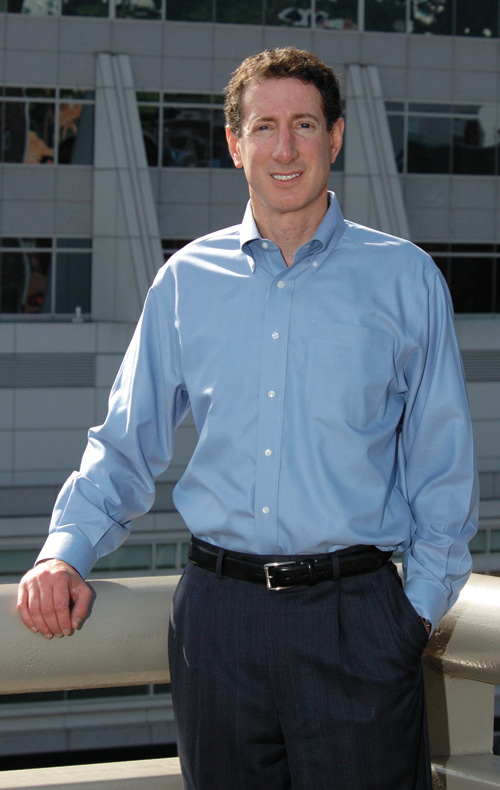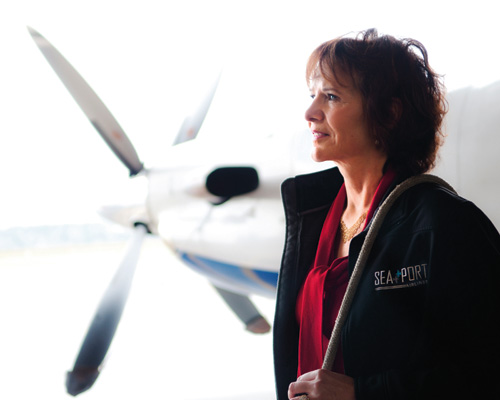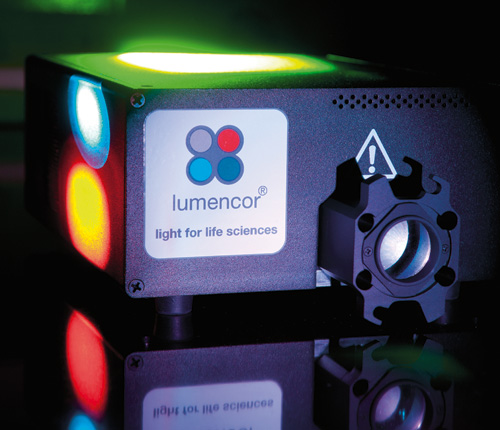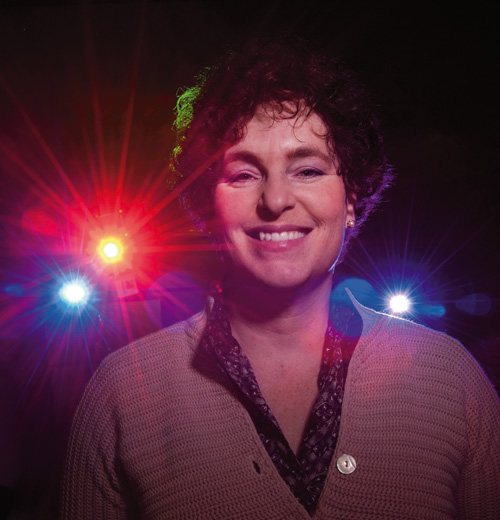 The Oregon Angel Fund has backed 16 companies since 2007 and not one has failed. The results speak for themselves as the fund becomes a powerful force in supporting hot new businesses.
The Oregon Angel Fund has backed 16 companies since 2007 and not one has failed. The results speak for themselves as the fund becomes a powerful force in supporting hot new businesses.
BY BEN JACKLET
 In 2005, a group of 23 investors put $5,000 each into a modest pool with the goal of backing some of the most promising young companies in Oregon. Through collective intelligence and collaborative decision-making, they winnowed 50 good companies down to three great ones: Clackamas-based pet supply wholesaler Pet Appeal, Portland-based e-commerce software developer Monsoon and Portland-based health care billing specialist Clinicient.
In 2005, a group of 23 investors put $5,000 each into a modest pool with the goal of backing some of the most promising young companies in Oregon. Through collective intelligence and collaborative decision-making, they winnowed 50 good companies down to three great ones: Clackamas-based pet supply wholesaler Pet Appeal, Portland-based e-commerce software developer Monsoon and Portland-based health care billing specialist Clinicient.
 Six years later, all three of those companies have created jobs for Oregon and wealth for investors. The group that selected these three companies and nurtured them with early money also has grown — into the Oregon Angel Fund, an increasingly powerful catalyst for finding, choosing and backing hot new businesses. Some of the best minds in the business community are involved in the Oregon Angel Fund, and their results speak for themselves. Since establishing the fund in 2007, the group has invested $7.7 million in 16 companies. These portfolio companies have created a combined 443 jobs and collectively earn $59.6 million in annual revenues. Although angel investments tend to be risky bets, not one of the Angel Oregon companies has failed. Other than one business that was sold, every company in the portfolio grew through the economic doldrums of 2009 and 2010. Many have gone on to bring new money into Oregon, with early angel investing spurring another $46 million in follow-on investments from other sources.
Six years later, all three of those companies have created jobs for Oregon and wealth for investors. The group that selected these three companies and nurtured them with early money also has grown — into the Oregon Angel Fund, an increasingly powerful catalyst for finding, choosing and backing hot new businesses. Some of the best minds in the business community are involved in the Oregon Angel Fund, and their results speak for themselves. Since establishing the fund in 2007, the group has invested $7.7 million in 16 companies. These portfolio companies have created a combined 443 jobs and collectively earn $59.6 million in annual revenues. Although angel investments tend to be risky bets, not one of the Angel Oregon companies has failed. Other than one business that was sold, every company in the portfolio grew through the economic doldrums of 2009 and 2010. Many have gone on to bring new money into Oregon, with early angel investing spurring another $46 million in follow-on investments from other sources.
How did they do it?
Investor and entrepreneur Eric Pozzo was the nominated chairman who led the Angel Oregon selection and investment process in 2005 as a volunteer with the Oregon Entrepreneurial Network. “We did a lot of research, found the companies to present, went into a room, voted and signed a big check to these individuals,” he recalls. “Everyone very much enjoyed it, and at the end of the process a lot of us wanted to do it year-round… We wanted to turn it from a small one-time pop to a well-organized machine that constantly cranks through deal flow and is very much investor driven.”
 |
Eric Rosenfeld, managing partner for Capybara Ventures, was instrumental in creating the Oregon Angel Fund and helps to manage it. He calls the fund “a private sector-driven stimulus with state support.” |
Pozzo’s ideas made sense to Eric Rosenfeld and his colleagues at Capybara Ventures. Rosenfeld had been wondering whether the traditional model of investing — “You surrender your money to a couple of smart people and they decide how to invest it on your behalf” — was becoming obsolete. Rather than perpetuate that model Rosenfeld was eager to embrace the lessons of the rise of Web 2.0, Google and Facebook: the “phenomenon of people wanting to contribute and share, not just to consume, but to be a part of something, and shape it.”
With those ideals in mind, Rosenfeld and his partners developed a new model for participatory investing. Twenty investors with deep collective knowledge of markets, technologies and business operations would put $25,000 each into an annual fund established as a limited liability corporation. They would pool their expertise as well as their money to research companies in depth, then vote on which ones to back, with a two-thirds majority required for the money to flow. The two-thirds threshold would set high standards, the size of the group would widen its perspective and the one-year nature of the fund would force decision-making. The entire fund would be invested each year, with a newly formed LLC replacing it in the following year. Entrepreneurs would be motivated to apply because the money is already in the bank waiting for someone to take it. Investors would be motivated to take due diligence seriously because it’s their money on the line. Everyone would be motivated to bring new businesses into the process, because the more companies that apply, the better the odds that one will succeed spectacularly. Individuals within the group would be more likely to invest on their own knowing the company had earned the support of a diverse collection of accomplished businesspeople.
They didn’t find 20 investors that first year; they found 36. They signed on the Ater Wynne law firm, the Geffen Mesher accounting firm and OEN as sponsors and made four investments in 2007. The state got involved as a non-voting member the following year, contributing matching funds from the Oregon Growth Account and treating them as a pure investment rather than the typical ribbon-cutting-style economic development project. Word spread, and the pool of investors grew. Today about 80 investors are involved. Most have voting rights although a few invest passively. The 2011 fund will exceed $3.1 million, with more than $1.6 million raised from investors, matched by $1.5 million from the state’s Oregon Growth Account. The plan is to invest $400,000 to $750,000 into four to five hot Oregon companies, selected for the talent of their teams and the quality of their ideas.
“We’re at a size now where someone in the room is going to know about any given market or technology that comes before us,” says Rosenfeld. “And if they don’t, chances are they will know someone who can help us understand it.”
The fund is managed by Pozzo, Rosenfeld, and Capybara associate Shannon Heim, who organize meetings and negotiate terms with the companies seeking funding. The investors range from retired executives with decades of experience to newcomers who have made millions in emerging web technologies. Among the more active members are Pixelworks co-founder Bob Greenberg, Intel Capital veteran Drew Smith, former Novas Software CEO Scott Sandler, Vesta CEO Doug Fieldhouse and retired marketing executive Donna Blake.
Greenberg, who retired from Pixelworks at age 44 in 2005, estimates he has invested about $250,000 in local companies since becoming involved in the angel fund. “I like the group, I like the process and I like the results,” he says.
Donna Blake retired from the corporate world in 1996 and switched to investing in the stock market. It was a new challenge, but she missed her work: “The planning, the excitement, the strategy sessions, the marketing campaigns. I missed it all.”
 |
“The planning, the excitement, the strategy sessions, the marketing campaigns. I missed it all.” Donna Blake, Investor and board member, Seaport Airlines. // Photo by Eric Näslund |
She heard about the Oregon Angel Fund from a friend and signed up immediately after sitting in on a meeting. She enjoyed the collective approach and the fun atmosphere, but the real attraction for her was the work. “What’s exciting to me is learning about all of these business ideas,” she says. “It’s such a wealth of exposure to so many industries. We’re vetting businesses starting with concepts I never would have thought existed.”
With a background in sales and marketing, Blake stayed away from leading due diligence into the high-growth technology companies seeking funding. But she is also an avid pilot who earned her license in her 20s, so when Seaport Airlines came before the group, “My hand shot up and I said, ‘I want to lead this team.’”
The group ended up investing $400,000 in Seaport in 2009 following a thumbs-up recommendation from Blake and her team. Blake also moved outside of the fund to invest as an individual. The company struggled finding business commuters during the recession but found its way to profitability by smartly tapping into the market for essential air services for rural towns. Since expanding its business plan with encouragement from angel investors, Seaport has expanded to 120 scheduled flights a day in seven states, soon to be eight. Blake has been deeply involved with the expansion as a board member, flying to Memphis to help close the deal to move into the Tennessee market.
Blake has personally invested in other companies vetted by the angel fund, including the vacation rental business Second Porch; the e-commerce business The Clymb; and Celilo Group Media, the publisher of the popular Chinook Book. She also plans to bring three friends into the fund this year as new investors. “It’s a great diversification tool, and it’s fun,” she says.
Nick Wade agrees. He joined the Oregon angels last spring. After being introduced to Rosenfeld through mutual friends, he sat in on a meeting and immediately saw the potential. “I walked up to Eric afterwards and said, ‘I’m in,’” he says. “It was the vitality of the group that sold me.”
Wade, a former researcher at Intel with a lifelong interest in investing, appreciated the group’s methodical yet aggressive team approach. “It’s a risk investment,” he says. “But the thought and consideration that goes into each investment is prudent and thorough… And it will lead naturally to a more diversified Oregon economy.”
It already has. Among the companies within the OAF portfolio are the latest Oregon medical devices firm to gain FDA approval (Bend-based Clear Catheter Systems), the fastest-growing private telecommunications business in the nation (Vancouver-based Clear Access) and an emerging player in the wide-open wave energy industry (Corvallis-based Columbia Power Technologies).
Those are exactly the sorts of companies that could help improve Oregon’s lagging per capita income if they catch on and grow. And they all benefited from investors who might not have heard about them had it not been for the Oregon Angel Fund. “No way would I have considered investing in small companies in Oregon without this structure set up,” says Sandler, the former Novas CEO.
People who get involved in the Oregon Angel Fund tend to get intensely involved. Many describe the group as a family — a large, boisterous family with strong opinions and lively debates, but also a prevailing sense of civility and decorum.
The fund’s investors meet eight or nine times per year and pore over between 80 and 100 business plans annually. They vote on which companies they want to present and organize due diligence teams led by volunteers with relevant expertise to research the selected companies. Then at the next meeting they entertain 12-minute pitches from top executives, followed by a question-and-answer session. The companies are excused from the room and the due diligence teams present their initial findings along with a recommendation to hold off or to intensify research. The group votes on whether to delve deeper.
Once the investors decide they want to learn more, they dig into everything they can find, posting their findings on a shared Angelsoft website. Investors read the reports and express their enthusiasm and concerns at the following meeting before voting thumbs up or down on an investment deal negotiated by the fund managers. “Sometimes it [fails] and there’s a sigh,” says Pozzo. “But when it happens there’s applause and we break open the bottles of wine. Then we call the entrepreneur and tell them, ‘Good job, we got the thumbs up. Now let’s get this deal done.’”
The process does not end once the deal is signed. The investor who leads the due diligence effort usually ends up with a seat on the company’s board. The operating ethic is to mentor rather than meddle; the motto: “nose in, fingers out.” Individual angels move outside the group to add new investments to the pot. And with the entrepreneur’s permission, the group shares its research with other outside investors to bring in new money.
These aren’t just feel-good processes. They’re designed for results. Rob Wiltbank, an associate professor of strategic management at Willamette University who has written several research papers about angel investing, says most individual angel investments fail but a diversified portfolio of angel investments can produce average returns of $2.50 for each dollar invested over five years. The catch is that about 10% of angel investments produce 80% to 90% of the returns. Wiltbank recommends investing in 10-20 companies to improve the odds of success.
Wiltbank says the Oregon Angel Fund’s strategy of pooling expertise and refreshing the fund annually addresses the two most important rules of angel investing: to invest widely but also carefully. “I’m very familiar with the Oregon Angel Fund model and I’m a fan of it,” says Wiltbank. “The key is the people and the expertise they have.”
Rich Bader, a board member of the state’s Oregon Growth Account, is also a fan. “The processes that the Oregon Angel Fund has put together are very sound,” he says. “We’re pleased with the quality of the investments they’ve made and the level of due diligence.”
Since embracing the investor-driven, participatory model, Rosenfeld says he has no interest in going back. “It’s like a private sector-driven stimulus with state support. It’s not coming from the halls of government. It’s coming from individual businesspeople who could be on their yacht in the Caribbean or in Palm Springs but instead are here in rainy Portland spending their rainy afternoons with us. It’s a statement that people care about Oregon and its economic future.”
The first company the Oregon angels voted to invest in was Lumencor, a California transplant that developed a sophisticated light engine for bioanalysis. The husband-and-wife founders Steve and Claudia Jaffe reversed the prevailing migration pattern for growth companies by moving from Silicon Valley to Beaverton to build the company in December 2006. They placed second in the 2007 Angel Oregon contest, landed $197,000 from the fund in September of that year, and set to work developing, manufacturing and marketing their products, with help from mentors such as Pixelworks co-founder Bob Greenberg and later DesignMedix CEO and biotech veteran Lynnor Stephenson.
 |
Lumencor, which earned angel backing in 2007, has grown to 15 employees in Beaverton. The company designs, builds and markets light engines for use in the bioscience industry. // Photo by Eric Näslund |
They also tapped into a talented pool of optics experts from a local community that has seen several big successes in that niche. It was not an easy time to launch an ambitious new business but the founders kept at it, and with time the product took hold. VP Claudia Jaffe says the company has been living off revenue since October 2009, and employs 15 people in Beaverton.
A more recent investment supported a similarly ambitious medical devices company called Clear Catheter Systems. Dr. Edward Boyle moved from Seattle to Bend in 2001. A cardiothoracic surgeon by training, Boyle teamed up with researchers from the Cleveland Clinic to develop a device that prevents blood in catheters from clotting (these clots can lead to expensive and dangerous problems for patients and sometimes death). The company’s product, PleuraFlow, received FDA approval in December 2010.
The Oregon Angel Fund invested in Clear Catheter last year and placed 40-year medical device industry veteran Jim Fee on the board after Fee led the due diligence team. Boyle says Fee’s experience proved a huge asset as the company moved to hire the right sales executive to ramp up marketing after FDA approval. “Jim was very involved in helping me draw up the job description and recruit the right person. It was good to have him in the room, and I think it was good for the applicants to see him there too. We made the hire and he’s been doing great.”
 |
Lumencor VP Claudia Jaffe and her husband CEO Steven Jaffe moved their biotech lighting company from Silicon Valley to Beaverton with support from Oregon angel investors. // Photo by Eric Näslund |
Of course, angels do not give away their money and expertise for free. Entrepreneurs must work hard to earn their support, often coming before the group multiple times before landing an investment. And the terms of the deal don’t always please the recipients; at least one growing company, advanced food processor Columbia Phyto Technology, recently turned down an OAF investment because the founders were uncomfortable with the terms. Other entrepreneurs get put through the wringer repeatedly, revealing insider details about their nascent companies, only to be voted down in the end.
But the process is challenging for several reasons. First of all, the angels want to make sure they are investing in the best of the best. Secondly, they want to help the businesses that don’t make the grade to improve their plans and apply again. Giftango CEO David Nelsen, who has managed to expand aggressively during the downturn thanks to angel support, describes the process as worth the effort. “It’s more than them just giving you money,” he says. “It’s them taking you through a process that makes you a better entrepreneur.”
OAF invested half a million dollars in Giftango in 2009, and outside investors followed that up in 2010 by pouring in another $5 million. That money enabled the electronic gift cards company to expand into a new office near PGE Park in Portland and grow to 17 employees in time for the holiday rush season. Nelsen credits the Oregon angels with enabling that growth. “After having gone through that process with OAF, our series B round was pretty easy,” says Nelsen. “It made things easier for us at the next level.”
Other local companies have enjoyed healthy success since receiving backing from OAF. Portland-based Jama Software, which received $400,000 from the fund in 2008, has grown from eight people to 20. “Their revenues have quadrupled since we started working with them,” says Drew Smith, who led the due diligence team and sits on Jama’s board.
Another rising star from the OAF portfolio is Portland-based Elemental Technologies, a video processing business led by some of Greenberg’s former colleagues at Pixelworks. Elemental has raised $15 million and is aiming for $10 million in revenue next year. “They’re off to the races, and it’s great to see,” says Greenberg. He led the due diligence team for Elemental and serves on the company’s board.
Greenberg spent 20 years growing with InFocus and Pixelworks before delving into investing. He says he is more than happy to share his experience with the next generation of entrepreneurs. “We need people who have gone through the mill to nurture the next InFocus and the next Pixelworks,” he says. “We need more of those successes in Oregon.”
It hasn’t been the best of times to launch an experiment in funding young companies.
Rosenfeld and Pozzo say the hardest year to convince investors to stick with the fund was early 2009, when the stock market was crashing. Since then the group has added a number of younger entrepreneurs who have done well with technology startups. Nearly all of the investors from 2010 elected to re-invest in 2011.
Those investors are also likely to be invited to participate in the Portland Seed Fund, which launches this year, offering smaller amounts of money ($25,000-$100,000) to startups. The new seed fund may compete for local investor resources, but it could also improve the supply of hungry young companies with solid business plans. The Portland Development Commission has invested $500,000 in the seed fund, and the state has committed to investing another half million if the fund can raise $2 million elsewhere.
With capital finally flowing again and the economy slowly recovering, other new opportunities for burgeoning businesses should follow. The thawing of credit, at least in the venture capital arena, has already begun. Rosenfeld notes that with nearly $300 million in new investments, 2010 was the best year for raising venture capital in Oregon since Capybara began tracking investments seven years ago. “The mood is better,” he says. “People have more confidence.”
He’s looking forward to a fresh new crop of deals in 2011. “It’s one of the best feelings in the world,” he says, “when someone comes in with a business plan and you play a small role as a financial catalyst in helping them achieve their dreams. You see them two or three years later and they’ve got a team of great people and a beautiful office and happy customers. That’s what it’s all about.”
Businesses backed by the Oregon Angel Fund
- Celilo Group Media
- The Portland-based publisher of the Chinook Book, a sustainability-themed coupon book founded in 1999.
- Clear Access
- A Vancouver-based telecommunications business founded in 2005, named the fastest-growing company in its sector by Inc. magazine.
- Clear Catheter Systems
- A Bend-based medical device company founded in 2007.
- The Clymb
- A Portland-based outdoors/sports e-commerce retailer offering brand name deals to members.
- Columbia Power Technologies
- A Corvallis-based wave energy company founded in partnership with Greenlight Energy Resources and Oregon State University in 2005.
- Daverci
- A medication management business that sold to Kentucky-based Polycare in 2008.
- Designmedix
- A Portland-based developer of medications founded in 2006 that combats the problem of drug resistance.
- Elemental Technologies
- A Portland-based video software company founded in 2006.
- Giftango
- A Portland-based developer of electronic gift cards that raised $5 million in October 2010. Founded in 2005.
- Jama Software
- The Portland-based developer of the web-based application Contour founded in 2006.
- Lumencor
- A Beaverton-based manufacturer of precise light engines for life science applications founded in 2006.
- RNA Networks
- A Portland-based tech company specializing in memory virtualization founded in 2006.
- Revelation
- A Portland-based software company that assists marketers with qualitative research founded in 2007.
- Seaport Airlines
- A Portland-based airline that began flights in 2008, specializing in hassle-free travel and subsidized “essential air service.”
- Second Porch
- A Portland-based software firm that connects travelers with owners of vacation rentals. Founded in 2009.
- Wicked Quick
- A Portland-based designer of auto racing-themed apparel and accessories founded in 2003.

